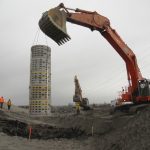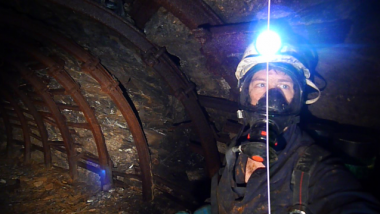The DSEAR meaning is very specific, and is easily defined. DSEAR (The Dangerous Substances and Explosive Atmospheres Regulations of 2002) is the United Kingdom’s implementation of the European Union-wide ATEX directive.
The intention of the Regulation is to reduce the risk of a fatality or serious injury resulting from a “dangerous substance” igniting and potentially exploding. Examples of a “dangerous substance” as defined by DSEAR include sawdust, ethanol vapours, and hydrogen gas. The regulation is enforceable by the HSE or local authorities. via en.wikipedia.org

A quick guide to DSEAR
- DSEAR in detail
- Publications
- ATEX and DSEAR Frequently asked questions
- Quick guide to DSEAR
- What is DSEAR?
DSEAR stands for the Dangerous Substances and Explosive Atmospheres Regulations 2002.
Dangerous substances can put peoples’ safety at risk from fire, explosion and corrosion of metal. DSEAR puts duties on employers and the self-employed to protect people from these risks to their safety in the workplace, and to members of the public who may be put at risk by work activity.
What are dangerous substances?

Dangerous substances are any substances used or present at work that could, if not properly controlled, cause harm to people as a result of a fire or explosion or corrosion of metal.
They can be found in nearly all workplaces and include such things as solvents, paints, varnishes, flammable gases, such as liquid petroleum gas (LPG), dusts from machining and sanding operations, dusts from foodstuffs, pressurised gases and substances corrosive to metal. via www.hse.gov.uk
What Does DSEAR Require Organisations to Do in Order to Comply?
DSEAR requires us to carry out a risk assessment in order to identify what dangerous substances are in our workplace and to determine the fire and explosion risks associated with those substances in the context of their intended use.
To put control measures in place to either remove those risks or, where this is not possible to effectively control them.
To put controls in place to reduce the effects of any incidents involving dangerous substances and prepare plans and procedures to deal with accidents, incidents and emergencies involving dangerous substances.
Identify, classify and adequately sign areas of the workplace where explosive atmospheres may occur and ensure that employees are properly informed about and trained to control or deal with the risks arising from the dangerous substances. via www.nottingham.ac.uk
The What is the IMPORTANT Meaning of DSEAR?
“It’s the Responsibilities DSEAR Places Upon All Organisations for Assessing Risks to Prevent Explosions in the Workplace”

DSEAR places duties on employers and the self-employed to protect people from such risks in the workplace. These include members of the public who may be put at risk by work activity.
Dangerous substances are any that could, if not properly controlled, cause harm to people as a result of a fire or explosion. They include such things as solvents, paints, varnishes, flammable gases, dusts from machining and from foodstuffs. via www.eprisk.co.uk
June 2015 – DSEAR Meaning Has Been Extended
Note: From June 2015 DSEAR meaning also covers gases under pressure and substances that are corrosive to metals. From June 2015, DSEAR places a formal requirement on employers to assess the risks for substances if classified for these properties and put in place suitable control and mitigation measures. It is anticipated that the practical impact, if any, of these changes will be minimal because the intrinsic hazards of the substances being used, or present, in workplaces is unchanged. via www.aber.ac.uk
Need Assistance with ATEX and DSEAR Compliance?
Its essential to discover the finest ATEX and DSEAR compliance possible. However, similarly we understand you require to work within an affordable budget plan. You will discover that we fit that requirement.
Let us take the stress far from you and your organisation and ensure you have the best recommendations to accomplish compliance with the DSEAR meaning.
What you get from us, is a basic strategy to follow to keep your company safe and keep the HSE and insurance providers pleased.
Not exactly sure if you require our recommendations then why rule out the concern of; “if the worst was to occur” what would the effect be on your company?
DSEAR is an expert subject within the health & security realm. Some specialists might charge extremely inflated cost. We do not do that. We do understand that we might not be the least expensive choice during a bidding round.
However, you may count on us to ensure that we always offer remarkable worth for the investment in this complex topic.
Who Is Responsible for the DSEAR Risk Assessment?
You may well ask “Who Is Responsible for the DSEAR Risk Assessment?” The person who Is responsible for carrying out the DSEAR Risk Assessment for any workplace is a good question. One which may arise when a number of contractors, and sub-contractors operate on a site, where an explosion hazard is present which requires the […]
Landfill Site DSEAR Risk Assessment and ATEX Directive Compliance
The following is an explanation of the requirements of the DSEA Regulations for Landfill Site DSEAR Risk Assessment, and what they mean for landfill site owners and operators. All landfill owners (and by delegation their operators) fall under this regulation, and must act in order to comply with Dangerous Substances and Explosive Atmospheres Regulations (DSEAR) which have […]
DSEAR Risk Assessment – What is It, and When Must It be Done?
A DSEAR Risk Assessment is defined as “a Risk Assessment which assesses all the risks which are risks which fall within the scope of the UK’s DSEAR”. For those unfamiliar with DSEAR, the following extract from the UK governments HSE website defines the meaning of DSEAR: The DSEAR Explained The Dangerous Substances and Explosive Atmospheres […]




